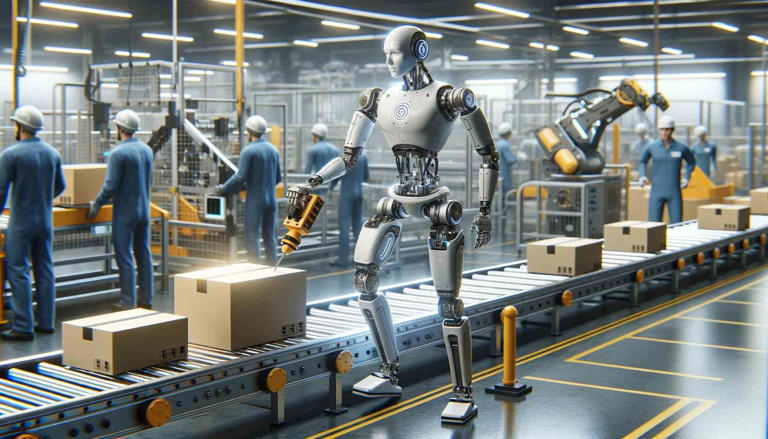Amazon.com Inc., known for its relentless pursuit of efficiency and innovation, has achieved a significant milestone by integrating over 750,000 robots into its operations. As the world’s second-largest private employer, Amazon has seen a remarkable transformation in its workforce composition, increasing its robot count from 200,000 in 2019 to over three-quarters of a million today.
This shift comes at a time when the company’s human workforce has slightly decreased from 1.6 million in 2021 to 1.5 million, highlighting a pivot towards automation in its business model.
The introduction of robots like Sequoia and Digit into Amazon’s fulfillment centers is a key component of the company’s strategy to enhance its logistical capabilities and improve delivery speeds for its customers.
Sequoia is designed to expedite inventory management and order processing, while Digit, a bipedal robot created in partnership with Agility Robotics, manages tasks such as moving empty tote boxes.
Amazon: The Human-Robot Synergy
Despite the extensive deployment of robots, Amazon emphasizes that this shift is not about replacing human workers but enhancing their capabilities.
The robots are tasked with handling repetitive and physically demanding tasks, thus allowing human employees to focus on more complex and creative roles.
This collaborative approach aims to boost productivity and ensure workplace safety, aligning with the company’s goal to achieve greater efficiency and faster delivery times.
“The significant investment in robotics showcases Amazon’s commitment to innovation in its supply chain,” noted an Amazon spokesperson. “It highlights the company’s belief in the synergistic potential of human-robot collaboration.”
Economic Impacts and Job Dynamics
However, the increasing automation raises inevitable questions about the future of human labor within Amazon and the broader economy.
Studies, including those from the Massachusetts Institute of Technology (MIT), have documented the impact of industrial robots on job markets, noting that such automation tends to negatively affect jobs and wages in sectors where they are implemented.
This introduces a complex debate about the economic and political implications of widespread automation.
Despite these challenges, Amazon reports the creation of 700 new categories of skilled jobs that did not previously exist within the company. These roles reflect a shift towards more specialized, non-repetitive tasks that require higher levels of expertise and creativity.
“Automation has led to the creation of new skilled job categories at the company, reflecting a broader industry trend toward the integration of advanced technologies with human workforces,” the spokesperson added.
Navigating the Future
As Amazon continues to integrate robotics and artificial intelligence into its operations, it could serve as a microcosm for broader economic trends. The challenge remains for Amazon and other industry leaders to manage these transitions in ways that maximize the benefits of automation while mitigating its potential drawbacks.
Ensuring that the productivity gains from automation are shared broadly across the workforce will be critical in addressing concerns about income inequality and job displacement. As we look to the future, the role of automation in shaping the labor market and industry standards will undoubtedly continue to evolve.
Amazon’s journey with robotics may just be a precursor to a new era in which human-robot collaboration becomes the norm across various sectors, promising enhanced efficiency but also posing new challenges for the global
